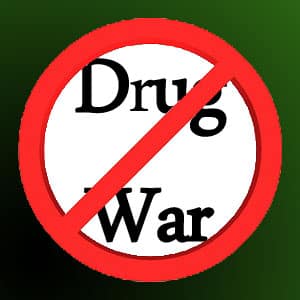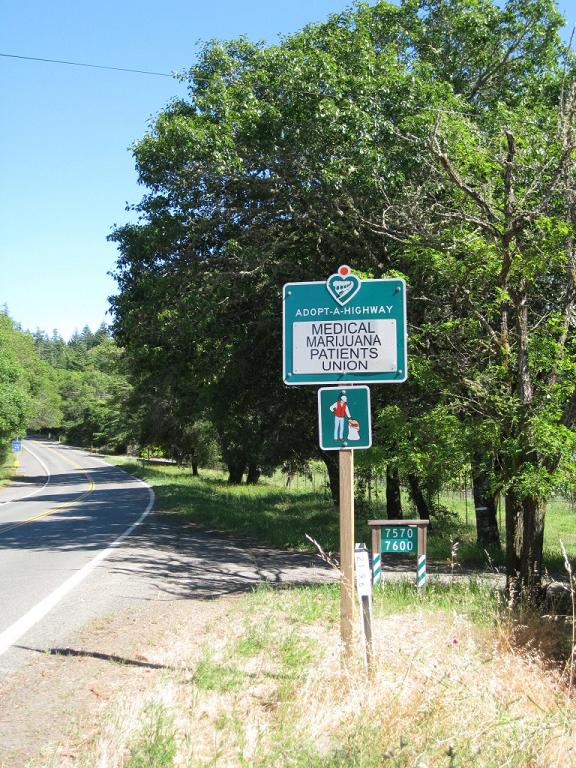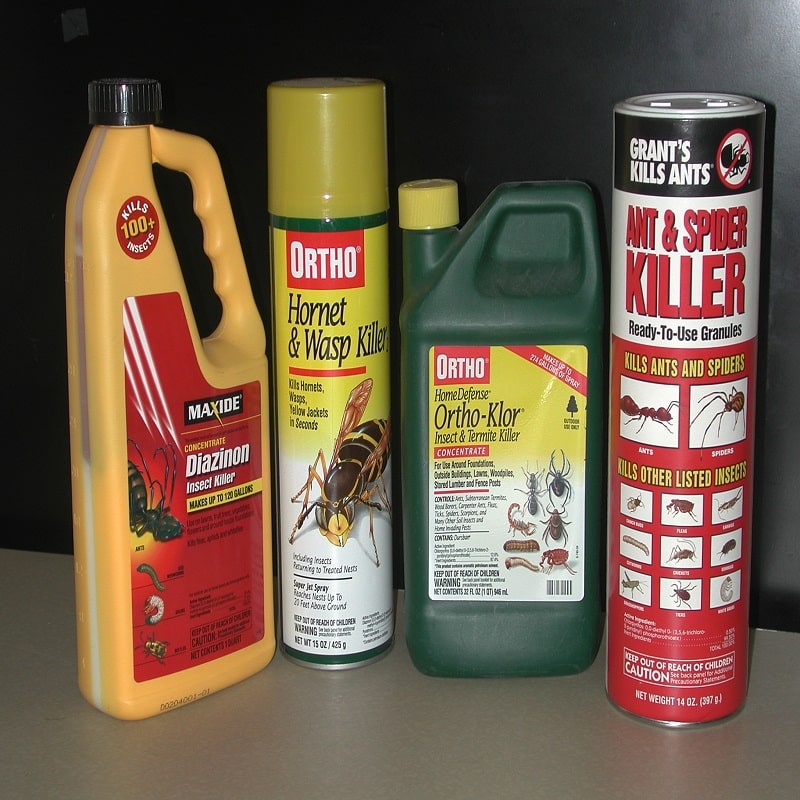The key law of physics that keeps all pundits employed is “no one can time travel.” In a classic Bloom County cartoon from the ’80s, one economist exclaims, “The key, of course, is the deficit,” to which the other forcefully retorts, “The deficit, my fanny.” It’s one or the other, but both fellows get paid.
The drug policy arena, into which I’ve been drawn as a pundit whenever a television producer Googles “Ending the Drug War,” would seem to be no exception. The last few taxpayer-funded Drug Warriors – people with so little concern about the facts, let alone America’s public health and economy, that they’re still willing to make a career of pushing a 40-year failed Just Say No argument – might go to sleep every night thanking physics for this “no one can be 100% sure about the future” loophole. Their whole mortgage payment depends on it.
But there’s a problem with the usual punditry gravy train model when it comes to drug policy. We do know what happens when the Drug War ends in America. I just wrote a book about it. What happens is the economy improves, cartels are hurt, and public safety takes an immediate turn for the better. The Drug Peace Era is quantifiably good for America and her families.
In fact, the “Zip-tie” program in Mendocino County, CA, under which cannabis farmers were certified by the county Sheriff’s Department and each plant wore a bright yellow necklace with its permit number, was an unmitigated and immediate success. That is, until federal harassment shut the program down at the end of the 2011 farming season.
Don’t take my word for it that the Drug Peace works. The one time Drug Warrior who administered the Mendocino program, Sergeant (now Captain) Randy Johnson, told me during a 2011 farm inspection that the Zip-tie program altered the entire social fabric of the community. This is a place that derives 80% of its economy from its famous Emerald Triangle cannabis harvest.
“After 27 years in law enforcement, for the first time I’m getting tips on domestic violence and home invasion. We have a safer community. That’s why the (Zip-tie) program is important.” In other words, when the Sheriff has permitted and inspected your garden, you’re not worried about getting raided for it. You’re a taxpaying member of society, like a grape farmer. It makes cops’ lives easier. They can focus on, ya know, crime.
I can confirm the home invasion effect. As long as federal prohibition exists, “Rippers” will exist. These are the specialized breed of criminal who plan cannabis crop robberies right at harvest time. One of the farmers I followed in Too High to Fail: Cannabis and the New Green Economic Revolution awoke to Rippers disturbing the local deer one morning in October, 2011. Guess what he did? He called the police. Guess what the rapidly responding deputy did? He chased off and nearly apprehended the Rippers, after getting their license plate number. He was protecting the local farmers.
Oh, and the Zip-tie program also raised $600,000 in permitting fees during its first full year of operation, saving seven deputy sheriff positions that had been slated for the budget chopping block. To join, the program cost farmers about $8,500 annually for inspections, fencing-related zoning requirements, and the physical Zip-ties (like what you repair your truck with). This for a crop that could plausibly gross half a million dollars for the not-for-profit cooperatives that formed the county business model.
Win-win-win. Cash-strapped local government, the region’s largest economic engine, and the overall community. Let’s not forget the collectives’ patients and the wider Californian taxpayer (the Golden State now generates $100 million annually in cannabis taxes).
And if all that didn’t convince you that the Drug Peace has broken out and it’s better than the Drug War for the law-abiding citizen, the cannabis organization-sponsored highway cleanup signs are already up in Mendocino, California, to remind you.
At the Mendocino food bank where I volunteered while researching Too High to Fail, the manager told me she welcomed the era when successful growers could donate with recognition instead of passing her wads of cash donations. “Not that we don’t appreciate it.”
When the unconscionable raids that I wrote about occurred in the fall of 2011, this good-for-America permitting program was in the process of expanding to surrounding counties. It would have raised millions in local revenue and increased public safety in California in 2012 and beyond.
Even the many multi-generational black market Emerald Triangle farmers I met in the course of my year-long research were paying attention. Without question, they were ready to come aboveground if it looked safe. They knew it was right, ethically. That wasn’t the issue. They knew it was time.
It was safe, locally, to announce yourself as a farmer of America’s number one crop in 2011. It worked for everyone except for regional Drug Enforcement Administration deciders and the U.S. Attorney’s Office for California’s Northern District.
Which, of course, leads to the conclusion reached by any journalist who’s spent a second researching the Drug War from the front lines: The United States must remove cannabis from the federal Controlled Substance Act and let states regulate it like alcohol.
I’ll pass lightly over how dysfunctionally and counterproductively the federal war is being fought, domestically and all over the world. Which is to say I’ll but quickly remind Americans to check out the Defense Authorization Act of 2013, which approved the use of drones on the Drug War’s domestic fronts. Ya know, on Americans. No, my plan is focus on the positive.
Here’s the positive. A Mendocino-like permitting model, expanded to a national level, combined with the inevitable federal policy decision to let states regulate cannabis, will create a $46.7 billion annual taxable economy, according to Harvard economist Jeffrey Miron. Another $41.3 billion will be pumped into the economy in saved enforcement and incarceration costs. And the Zip-tie program has provisions — including plant number limits — that benefit small farmers who grow sustainably.
It’s not like the U.S. will be going at this alone. Latin America is on board, as evidenced by a conclusion reached by the Organization of American States this week in a long awaited report which President Obama co-commissioned. What was the conclusion of the 190-page report? “Prohibition has failed…Decriminalization of drug use needs to be considered as a core element in any public health strategy.”
Add to this Colorado and Washington’s not-even-close Drug Peace votes in 2012, plus policy in Portugal, the Netherlands, Denmark and other Drug War opt-out nations, and the conclusion is clear: the world is ready for the Drug Peace Era. As Mexican President Enrique Peña Nieto put it after the Colorado and Washington votes, “It’s clear that this could bring us to rethinking the (Drug War) strategy.”
The California farmer whose crop and livelihood were saved from Rippers by local deputies at harvest time 2011, Tomas Balogh, recounted the incident to me with head shaking wonder. “It’s a huge change for cannabis in America. The sheriff works for all of the citizens of the county. All of them.” Including the cancer patients to whom Balogh was able to deliver his medicine – I came along on one delivery.
Though Balogh made it back safely from the Drug War’s final front, the same could not be said of all of his would-be taxpaying farmer neighbors. I followed one farming family and chamber of commerce member all season whose organic locavore medicinal cannabis delivery cooperative farm was raided at machine-gunpoint by DEA agents days before harvest, care of your tax dollars. The senseless paramilitary seizure (no charges were filed) deprived 3,300 patients of medicine and the local community of a dozen jobs.
Whether or not Mendocino County’s landmark Zip-tie program was generated by local backwoods loyalty or the demands of “It’s the Economy, Stupid,” it worked for all Americans. And will, again, when the exorbitant travesty of the Drug War ends.
So, sorry pundits who would like to continue running with the Brains on Drugs scare tactics. The facts on the ground are clear. Even your last refuge, the “who will think of the children?” screed, falls flat in the face of real world facts. As a father, it greatly interests me that youth use rates are lower than ours in two Drug Peace nations, Portugal and the Netherlands.
It’s time for you Drug Warrior pundits to find another job. Like segregationists and Vietnam War hawks, you’ve come to the crossroads of public opinion beyond which you’re just making your failed cause look even sillier. Think of your legacy. We build monuments to our MLKs, not our Harry Anslingers. Stop bullying Americans whose only “crime” is continuing humanity’s Millennia-long use of an herb that’s far safer than alcohol.
Americans of all ages and political inclinations are on to the drug policy truths, guys. You might want to follow D.A.R.E’s recent example and give up preaching against cannabis. If you want help with educating folks about alcohol and prescription pill abuse, our real epidemics, I’m available to help.
Somehow I fear you might find these less profitable. Like the alcohol prohibition banner wavers who quickly disappeared from punditry after December fifth, 1933, you’ll creep back to the faculty lounge, grateful for tenure if not for the Zip-tie program.
About Doug Fine
Doug Fine, bestselling author of Too High to Fail: Cannabis and the New Green Economic Revolution, is one of the world’s few investigative cannabis journalists. As such, he meets folks from Hawaii to Laos who, until federal and worldwide prohibition finally ends and the professional conventions begin, are unlikely to meet one another. He’s a pollinator of Drug Peace ideas, in other words, a bumblebee. Each week in this column you’ll hear another cannabis story from around the planet. Doug’s work from five continents is at: www.dougfine.com. Follow him on Twitter and on Facebook.
Source: National Cannabis Coalition – make a donation










